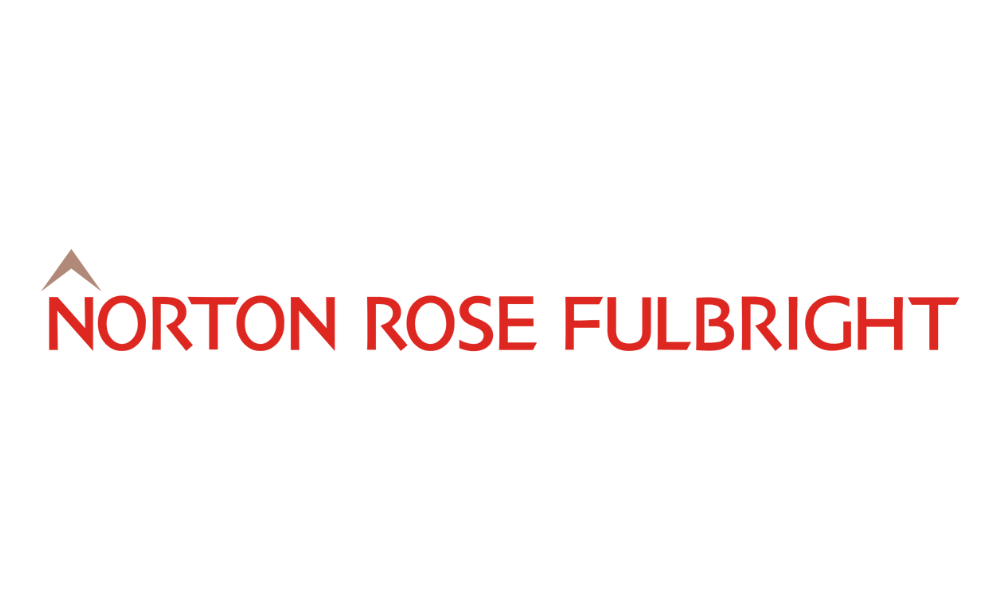MARK TAMMINGA IS blunt in discussing the future of lawyers in a world of rapidly emerging legal tech. “Lawyers read the news. They know the jig is up,” he says. Cognitive computing, machine learning, rapidly improving contract automation systems and an inevitable shift away from billable hours to fixed pricing will no doubt take roles away from corporate lawyers. And hit the delete button on lawyers and firms that don’t quickly adapt.
“And that’s okay,” says Tamminga, a Hamilton-based partner with Gowling WLG, where he’s the firm’s leader of innovation initiatives. “I don’t say that with great joy.” Automated systems are doing so much these days, he says — driving cars, writing sports stories, and yes, pumping out legal contracts. “You can rue the day or you can try to figure it out. We are figuring it out. There will be fewer lawyers! Sorry, I said it.”
Tamminga says of coding: “It is my favourite thing. Practising law is a price I pay to actually use these [computing] tools,” he says. “I love doing it.” Since he started using DOS to program computerized document assembly in 1988, Tamminga has been a pioneer in applying computer technology and automation to the practice of law. He has his finger on the pulse of what he prefers to call “cognitive computing” (rather than artificial intelligence, a term he says is overused and inaccurate for today’s legal tech advancements so far).
NEW PLAYERS EMERGE
While basic forms of contract automation have been present for a long time in Canadian corporate law — since at least the 1980s — the past two years or so have seen much more sophisticated systems emerge, such as Contract Express (produced by Lexpert publisher Thomson Reuters), Kira Systems, Korbitec’s ACL and RAVN, to name a few. They’re being increasingly adopted by Canadian corporate law firms.
At Gowling WLG, for one example, the firm has just begun experimenting with a bulk data extraction system that can comb through thousands of contracts in a portfolio and extract specific information or clauses to spot, say, a particular legal risk hidden amongst them. “We’ve used it on a million-dollar file,” says Tamminga. A client had presented the firm with thousands of contract documents, asking, “What do I do with these?”
Tamminga doesn’t mince words when it comes to the kind of tedium these systems will manage. “If I want to buy a mall and it has 250 leases in it, I want to know all about those leases. If they are machine-readable, should I do that automatically? Or do I have [an associate] read all 250 of those leases?”
So Gowlings told that big, anxious client, with its digital heap of contracts, “Well, we can’t have anybody read them, because they’ll die! Here: we’ll throw this software at it and we will see what comes of it. And we got useful stuff!”
Toronto-based Kira Systems started up in 2011 and has since had its technology purchased by a handful of major firms in Canada, the UK, Germany and India. Kira co-founder and CEO Noah Waisberg was an M&A lawyer with Weil, Gotshal & Manges LLP in New York City. He says that, for lawyers, due diligence and vetting contracts is the prison equivalent of sledge-hammering boulders to bits. “I did this work. I supervised this work. I knew that it took a ton of time. Finding information in contracts is one of the main things a junior corporate lawyer does.” Thirty to 60 per cent of an M&A bill is typically due diligence, says Waisberg, mostly because of the time involved in bulk data extraction.
Find out what does a corporate lawyer do in Canada by reading this article.
Finding exclusivity or non-soliciting clauses in bulk contracts, for instance, is tedious work. That makes it particularly prone to human error. For those lawyers who manage to survive the profession’s coming disruption, the technology should presumably free them from such legal toil to pursue higher-value work.
FEAR AND BILLING
Chief Knowledge Officer Mara Nickerson leads Osler, Hoskin & Harcourt LLP’s foray — still in early days — into embedding more advanced contract automation technologies and knowledge-management systems into the firm’s national practice.
“For me, the thing that has changed a lot in the last year or so is that there used to be just a few tools, a few big companies — Contract Express, Exari, HotDocs — that have been around for a long time. Now just about every product that is coming out in the legal industry these days has a document automation component. It is just becoming embedded in every system. It is finally being seen as core to the efficient process in legal.”
Last year Osler started using Contract Express, a web-based contract automation system that allows a firm to quickly draft, compare and update legal documents. Once the system has been programmed to suit a particular firm’s approach to corporate law, lawyers can answer a list of questions posited by the system so it can draft a particular kind of required contract template. Contract Express can then quickly generate a set of documents — all accurately populated with correct names, dates and other data, along with a schedule and appropriate attachments.
Aside from the all-important aim of lowering legal spend for clients, says Nickerson, Contract Express should free up more junior lawyers to do more interesting, higher-value work — maybe a new deal or different transaction they wouldn’t have had time for before.
If there’s any bulwark against progress in contract automation and other legal technologies in the pipeline, it would have to be the billable hour. Which is why, to a large extent, it will be in-house counsel that will push contract automation and other efficiency technologies into the legal mainstream. “The incentives are all backwards. So that’s a huge impediment to driving efficiency,” argues lawyer Mitch Kowalski, a legal services innovator and author of Avoiding Extinction: Reimagining Legal Services for the 21st Century.
Kowalski says this correlation between hours and productivity is exactly what allows contract automation companies to sweep in and take a slice of the market. “The system right now rewards inefficiency and penalizes efficiency. And that hurts change within a law firm.”
Kowalski likes to describe the practice of law on an evolutionary technological continuum: Law 1.0, 2.0 and, someday, 3.0. The lawyers in the 1.0 era (pre-2008 as Kowalski pegs it) are labour-intensive and terribly inefficient. They need to be because time spent on files is their bread and butter. So they cling fiercely to the billable-hour model like a sailor hanging on to an overturned life raft.
As Kowalski wrote back in 2013 in the Canadian Bar Association’s National magazine, a lawyer practising in a more efficient 2.0 firm “will be offered a wider range of career options beyond the old and rather dull, associate-to-partner career path.” Instead, he believes, “You will choose among being a pricing director, project manager, business development manager, client manager, technical lawyer, or innovation manager, to name just a few.”
As provinces allow outside investments in law firms — something Kowalski expects before 2020 and that is already allowed in the UK and Australia — he argues that will prompt more evolutionary changes for legal service providers.
Last October Kowalski was named the inaugural Gowling WLG Visiting Professor in Legal Innovation at the University of Calgary Law School. Each year for the next five years, the professorship, established with a $125,000 gift from Gowling, will bring a leading innovation thinker to the school to discuss discruption in the space.
That, hopes Kowalski, will help the school graduate some of country’s first 3.0 lawyers — lawyers who are fully capable of surviving the changes ahead and working with the cognitive computing and AI technologies around the bend.
PERCEPTION V. REALITY
Yet the anchor of old thinking, which remains a drag on technological uptake, still appears considerable. In January Kowalski, commenting in a National Post column on a recent McGill University study on legal innovation, wrote that while Canadian law firms “talk a good ‘innovation’ game, little innovation is actually taking place.”
The study, titled The Illusion of Innovation at Canadian Law Firms, by MBA and law student Aly Háji, noted telling differences between the ways in which associates — as compared with partners and senior management — perceive both the importance and the amount of innovation happening at their firms.
While 84 per cent of partners and senior management agreed innovation was a strategic priority at their firms, only 42 per cent of associates felt the same. Fifty-eight per cent of associates believed there was no innovation leadership at their firm (or they weren’t aware of any), while 84 per cent of partners believed there was. As for whether there were incentives to innovate at their firm, 77 per cent of partners said yes, while 59 per cent of associates disagreed.
There are a few large Canadian corporations, Kowalski concedes, that have been able to flex their muscles a bit, requiring alternate fee arrangements.
IN-HOUSE INNOVATORS
Air Canada is one Canadian company now working to create a new “normal.” Its in-house team is experimenting with external and internal solutions in contract automation that go beyond the software of yore. Though such experimentation is costly, says Fred Headon, Assistant General Counsel, “we are starting to see some success with systems that go one step further” than what Air Canada currently has.
These systems, for instance, can ask on screen, when a lawyer is seeking to draft documents, what he or she is trying to accomplish? What things are important to them on this particular matter? “And based on those answers,” explains Headon, “[they can] draw upon a repository of model clauses and actually build a contract from scratch automatically.”
Headon is past President of the Canadian Bar Association and still chairs the CBA’s Legal Futures Initiative, which has been looking at how the Canadian legal market is changing and how the CBA can help foster successful adaptation to change among members. In 2014 it released a significant report, Futures: Transforming the Delivery of Legal Services in Canada.
While Headon agrees with Kowalski that the primary push for more legal technology will have to come from budget-minded in-house counsel, Headon gives credit to external firms for moving ahead with contract automation.
“The push for innovation is coming from both, but certainly in-house counsel don’t see their budgets grow at double-digit percentage increases on a regular basis. So there is always a pressure to achieve the proverbial ‘more for less.’ But we are seeing some responsiveness from firms as well, as they try to position themselves” in a more competitive environment.
At Osler, Mara Nickerson doesn’t see the devotion to billable hours as the prime impediment to enhancing contract automation at Canadian law firms. Corporate lawyers, she says, know clients don’t want to pay for inputs anymore: they care about outcomes. The billing model that’s rewarded lawyers for generations is “fundamentally changing. We’re certainly seeing more and more alternative fee arrangements (AFAs). Over half of the responses to RFPs we put in last year had a fixed-fee component or an alternative fee arrangement.” The number of AFAs has been steadily increasing the past five years.
Now, she says, “the business case has swung to the point where it is worth investing in these [contract automation] tools. And they’ve come a long way over the past 10 years. They have evolved and are easier to use. It’s easier to code the documents.”
Osler outsources the coding needed to customize its contract automation to Pangea3, a legal process outsourcing firm (produced by Lexpert publisher Thomson Reuters) with headquarters in New York City and offices in India. And last fall Osler opened Osler Works Transactional in Ottawa. Using Kira Systems, it offers capped- and fixed-price legal support contract analysis, due diligence, closings and other routine facets of complex transactions.
That’s innovation. Yet one of the main obstacles that Nickerson, as Chief Knowledge Officer, faces in bringing innovation to her firm has been the clock. “The challenge is that the lawyers are busy. Showing them new ways of doing things is hard because they are busy. It’s not that they have an inherent skepticism about efficiency or a desire to be inefficient.”
Introducing the lawyers, especially young ones, to the tools before they use them, squeezing in some training, is critical. “It is the juniors who are going to use these tools. A senior lawyer should not be generating documents out of a document automation tool. That should be in the hands of juniors. So the focus is on rolling these out to the more junior lawyers.”
Fortunately, adds Nickerson, once a technology system such as Contract Express is coded to suit Osler’s practice methods, “these tools are pretty easy to use. They’re very user-friendly.”
OUTSOURCING
The inherent inefficiencies that existed in Canadian corporate law firms today are propelling change and competition in a number of ways. As corporate clients demand lower and more certain costs, competition is ramping up from a variety of outsourcing venues.
“Our competitors are not just other law firms,” notes Robert Percival, a partner at Norton Rose Fulbright Canada LLP who was a past director of the Canadian Information Technology Law Association. “We are competing increasingly with technology companies themselves; with companies that want to automate a lot of the services law firms provide.”
Says Percival: “Certainly that’s not the approach we are taking. We’re very aggressively pursuing and adopting technology systems not only locally but on a global basis to improve the way in which we are managing our practice.”
One example of a global firm moving the needle on legal tech comes from Europe. There, Dentons used an AI app developed by its NextLaw Labs division and UK artificial intelligence company RAVN to implement a new revenue stream analyzing client exposure to regulatory changes arising from Brexit.
And there are other sources of competition for Canadian law firms. The prevalence of what Mitch Kowalski dubs “nomadic lawyers” is on the rise. In early 2016, for instance, Deloitte acquired Conduit Law, a start-up that offers outsourced lawyers to support in-house counsel, as well as lawyers to temporarily fill on-demand needs at external firms.
Companies like Axiom (US, Europe, Singapore) or South Africa’s Exigent Group, with advertised lower overhead costs for labour and infrastructure, provide potentially less expensive tech-enabled legal outsourcing to Canadian firms and companies.
NOT SO RISKY BUSINESS
Whatever you call it, cognitive computing or artificial intelligence, the idea of computer brains running amok in legal services makes some uneasy about the risks and liability of leaving the drafting of contracts, due diligence — even, eventually, the execution of contracts through blockchain and distributable ledger technology — to automated processes.
Nickerson and others are very risk-sensitive. “When we are using the tools internally, I think there is no different risk than with any knowledge-management system. When lawyers use our model precedents [with contract automation] we have a big, bold note at the top that says, ‘DON’T JUST FILL IN THE BLANKS!’ You have to read it, you have to make sure it’s customized to fit your deal.”
Where there may be risk is in the possibility that Canadian companies follow a growing trend at law firms in the US opening up extranet portals to their contract automation systems, so clients can fill in the required blanks and queries themselves, without ever speaking to a lawyer.
“There’s always some concern there that they won’t answer the question right,” says Nickerson. “There could be some potential liability there.” In that scenario, she says, law firms need to make clear the circumstances when a client should speak to an actual lawyer.
And here’s the thing — there will still be actual lawyers down the road. Even though Libratus, an AI computer, recently beat some top-level poker players to win $1.5 million in a Pittsburgh casino — a significant technological development because the computer had to decide how to out-bluff the humans — there will be blue-suited and white-bloused survivors of AI and contract automation. Even Mark Tamminga thinks so.
These lawyers will have to be negotiators, litigators, highly focused specialists. “The law,” says Tamminga, “is a very complicated area, full of subtlety. And that subtlety won’t be captured by machine intelligence through the short term, or probably into the middle term.”
Tamminga sums up the changes that cognitive computing and contract automation will bring to the business of Canadian law this way: “If you are going to get bent out of shape about what’s coming, you are in a world of hurt. It’s neither good nor bad. It has no emotive content. It’s just coming. Grit your teeth, buckle down, square your shoulders and just do it.”
Anthony Davis is a freelance business and investigative writer based in Calgary.





